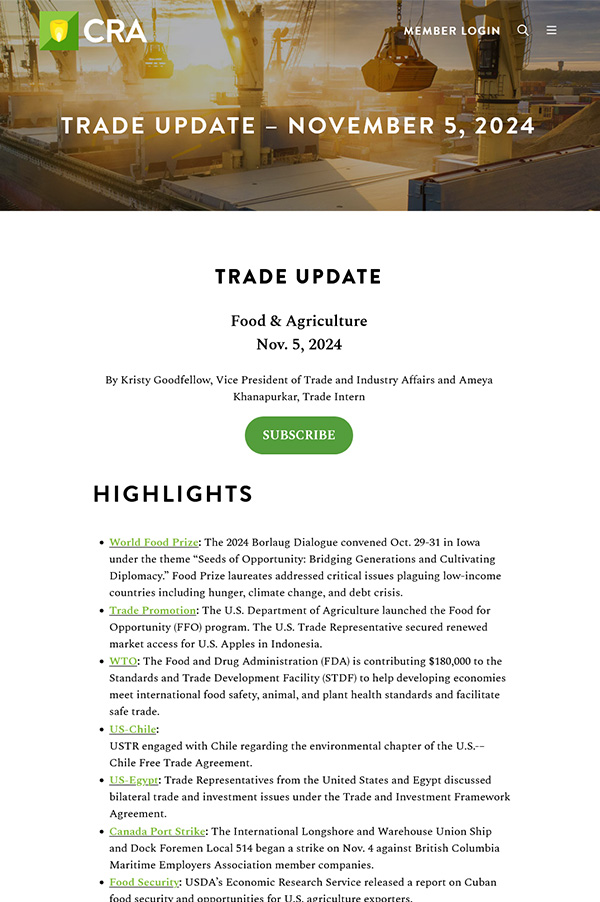CRA’s weekly Trade Update newsletter is a premier, single source of information to help you quickly and efficiently track developments and see how trade, food and agriculture issues interconnect. Each week you’ll have access to trade news carefully curated by CRA’s seasoned trade experts specifically for the food and ag community.
Join a growing group of subscribers including Capitol Hill staff, administration officials, and policymakers, who rely on Trade Update as a consistent resource for staying abreast of important trade news.
Trade Update is a free resource provided by CRA. Sign up today.
